But beyond that, what tactics – and tricks of the trade – can help make calving season run more smoothly and get calves off to a healthy start? Here are a dozen ideas to consider:
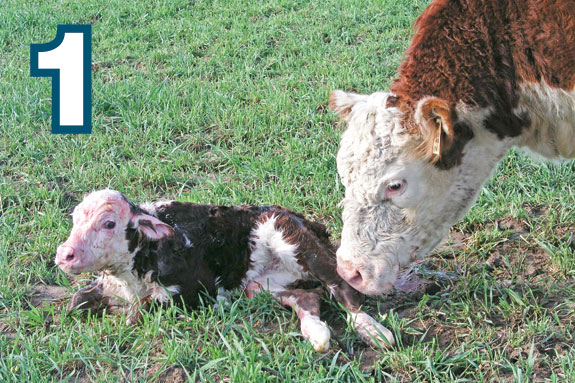
1. It starts with selection for calving ease. That’s the first advice most folks on this panel offered, including Kevin Schultz, who operates Sandhill Farms with his wife, Vera, and his parents, Ron and Arnita Schultz.
Their seedstock Hereford operation near Haviland, Kansas, includes 350 cows that calve during February, March and April. Schultz suggests paying attention to Calving Ease EPDs and Maternal Calving Ease EPDs to assist in bull selection and breeding decisions. He says, “Genetics or sire selection of both the calf and sire of the dam are important.”
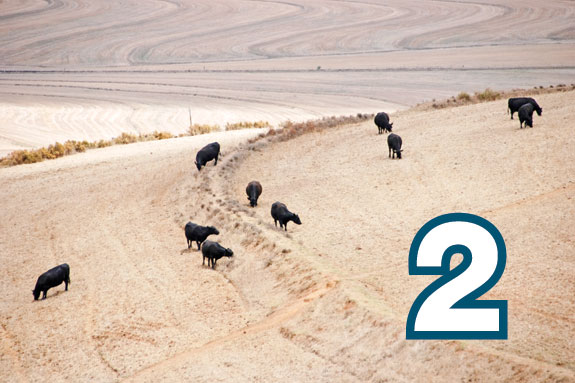
2. Pay attention to nutrition and over-feeding prior to calving. As a second tip, Schultz shares that in his region of the winter wheat belt, it is common knowledge that putting bred females on wheat pasture prior to calving will increase the birth weight of the unborn calf.
Thus he reminds others, “Proper nutrition, avoiding both extremes, is a management practice that will return dividends.”
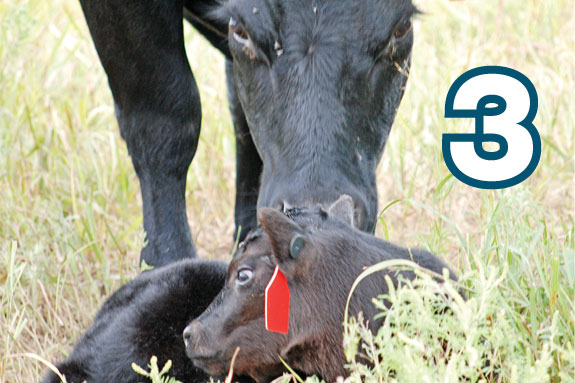
3. Monitor body condition. Also with regard to nutrition, Mark Harms emphasizes the importance of monitoring body condition of females prior to calving – not only for adequate colostrum production, but also for future breed-back.
Harms says, “Body condition scores of 5 1/2 or better at calving will pay dividends with regard to these two critical factors.” Mark and his wife, Kim, operate Harms Plainview Ranch near Lincolnville, Kansas. Their operation includes registered Angus, Red Angus and Charolais cows, with about 500 cows calving in September and October and 100 calving in February and March.
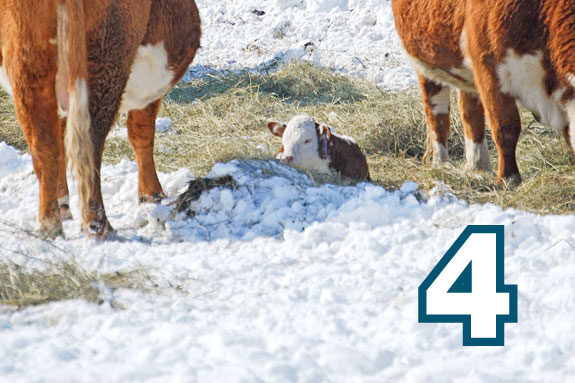
4. Provide shelter. When the wind howls and the temperatures drop, Schultz knows that windbreaks can be very beneficial for winter or spring calving, particularly for first-calf heifers.
“It is our experience that first-calf heifers don’t get the calf dried off and up sucking as fast as mature cows, and the colder environment compounds the young cows’ efforts,” Schultz says. Harms adds that during inclement weather, bedding is essential. He says, “Breaking the barrier between frozen ground and the body of a wet newborn calf could very well make the difference in survival.”
5. Give the cow a little incentive. Midland, South Dakota, rancher TJ Gabriel is no stranger to calving in the cold. Gabriel, who operates Deep Creek Angus Ranch with his wife, Jeanine, and their young family will calve 130 registered Angus cows this winter, 30 of which are first-calf heifers who begin calving Jan. 1.
The cows start to calve by Feb. 1. Gabriel says, “Since we calve in cold weather, the faster that calf gets up, the better.” So he sprinkles a little calf-claimer powder on each calf when it’s born. The specially formulated product helps ensure that cows claim their calf. “It helps make the cows a little more aggressive when licking calves off and getting calves up to nurse,” says Gabriel.
6. Keep calves healthy. To help boost calves’ immune system, Gabriel also gives every calf born a Vitamin B Complex shot to get its growth off to a good start. He dips iodine on every navel to minimize infections as well.
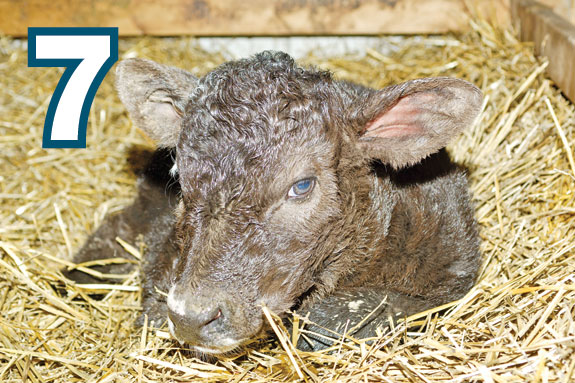
7. Keep pens clean. Sanitary calving areas are also important for getting newborn calves off to a healthy start. Gabriel puts lime down in the pens in his calving barn each time he cleans them. He also keeps barn stalls and calving pens freshly bedded.
8. Use nylon straps. In the event he has to pull a calf, Gabriel prefers nylon straps over calf chains. “Chains can injure calves’ legs; straps are a lot more calf-friendly,” he says.
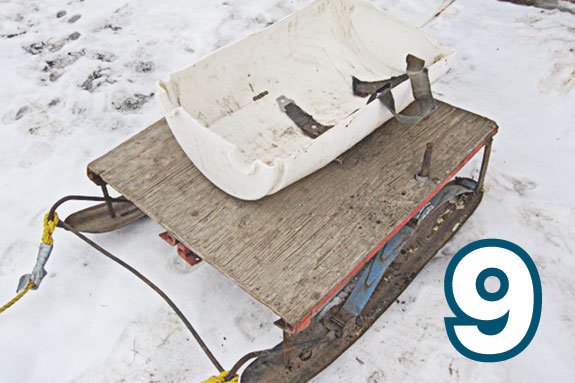
9. Have a calf-hauler handy. In Montana, Bob and Kathy Lee run a 400-head commercial Angus herd near Judith Gap. They begin calving their AI’d cows in mid-February and the rest of the herd the first week of March.
If a calf needs to be brought into the barn to be warmed up, Lee has concocted a homemade calf-hauler to easily get calves – and their mama – from the pasture to the barn. He attached a 3-by-3 piece of plywood onto a pair of snowmobile skis with a seatbelt bolted onto the center.
Lee can strap a newborn calf onto the homemade sled and pull it with a horse or four-wheeler. He says the secret is to have about 10 feet of rope, so the mama cow thinks she’s got the calf to herself and follows the sled to the barn. Lee can drive into his barn, unload the calf and the cow is usually not far behind.
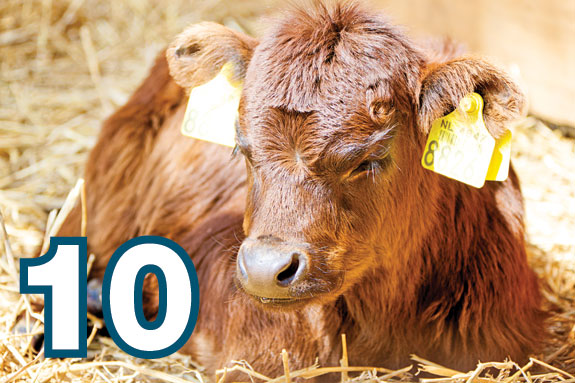
10. Don’t forget about record-keeping. Veterinarian Chandy Olson reminds producers that if they intend to participate in a source and age verification program, they’ll need to record the date of the first and last calf born, and have a total cow and calf inventory.
Additionally, pregnancy records and vaccine receipts are important, as they can be used to confirm inventories for those programs. Olson is based at St. Onge, South Dakota, and works with cattle herds in the Dakotas, Wyoming and Montana.
11. Know what you’ll do if calves get sick. Olson advocates having a pre-determined treatment protocol for sick calves before calving even begins. She explains, “Having a designated protocol for treating sick calves and marking or recording treated calves will allow for some marketing flexibility later on.
With a defined program and proper records, many of the calves could still be eligible for premiums offered through antibiotic-free and hormone-free marketing programs.”
A system of tracking calf illness also sets up a good framework with your veterinarian for addressing health problems as soon as they occur, Olson adds.
12. Plan ahead for next year. To make calving season go even smoother in the future, consider ultrasounding the herd – or at least first-calf heifers. “Ultrasounding lets you pinpoint when to expect calves,” says Montana’s Bob Lee. He ultrasounds his heifers about 30 days after the bulls have been pulled.
Olson ultrasound pregnancy tests 30,000 cows annually. She advises that the best time to ultrasound is between 30 and 100 to 120 days after cows are bred. Olson says ultrasounding can be a useful tool that allows producers to sort their herd into early-calving, middle-calving, and late-calving groups, with each group spanning about a 20-day calving period.
Olson concludes, “Dividing cows into calving groups can decrease feed costs as well as decrease labor and calving time frustrations. It is also a great way to evaluate the ‘productive’ health of a cow herd. Herds with an abnormal amount of late-calving cows may indicate a reproductive disease problem, a bull fertility concern, or, more frequently, a nutritional or stocking rate issue.” ![]()
PHOTOS
1. Calving ease is a critical EPD consideration for Sandhill Farms and its seedstock Hereford operation near Haviland, Kansas. Photo courtesy Vera Schultz.
2. Proper nutrition in the months prior to calving, such as grazing wheat acres, helps boost the birth weight of the calf. Photo courtesy thinkstock.com.
3. Body condition scoring should be monitored closely for colostrum and breed-back. Photo courtesy Kim Harms.
4. A barrier of fresh bedding above snow or ice may be a critical factor in calf survival. Photo courtesy Cindy Van Newkirk.
7. A clean stall with fresh bedding gives calves a healthy start. Photo courtesy thinkstock.com.
9. A device like this calf sled designed by Bob Lee of Judith Gap, Montana, is an inventive way to transport a calf to a barn safely, with the dam tagging along. Photo courtesy Kathy Lee.
10. Producers using age-source verification need to record birth dates and total cow and calf inventory. Photo courtesy thinkstock.com.







